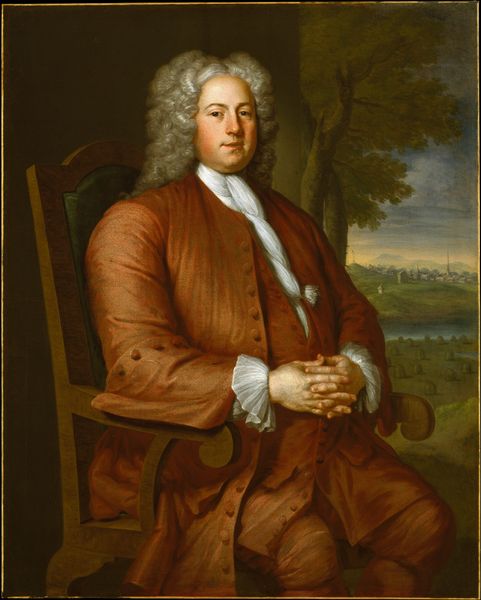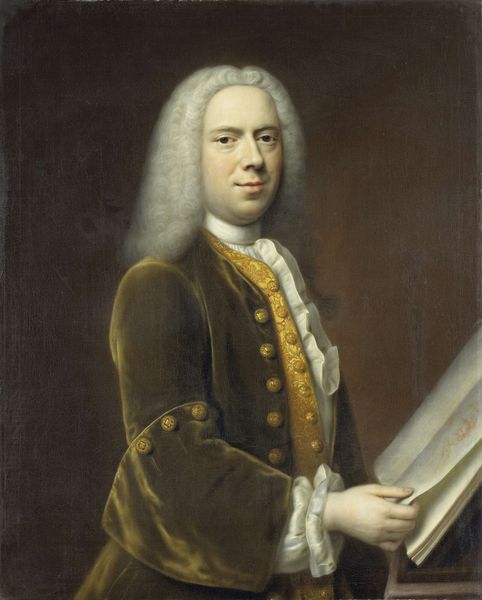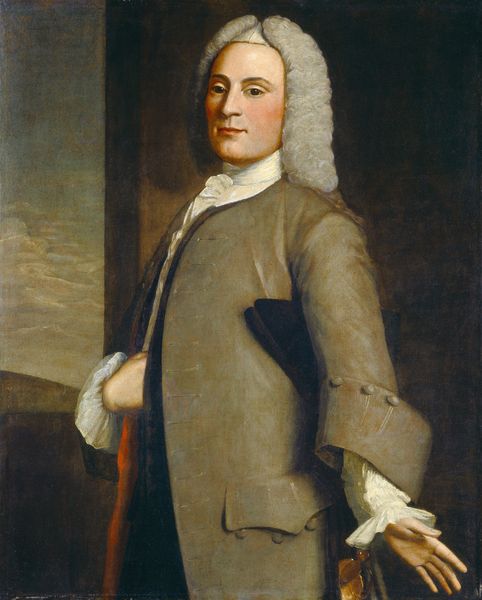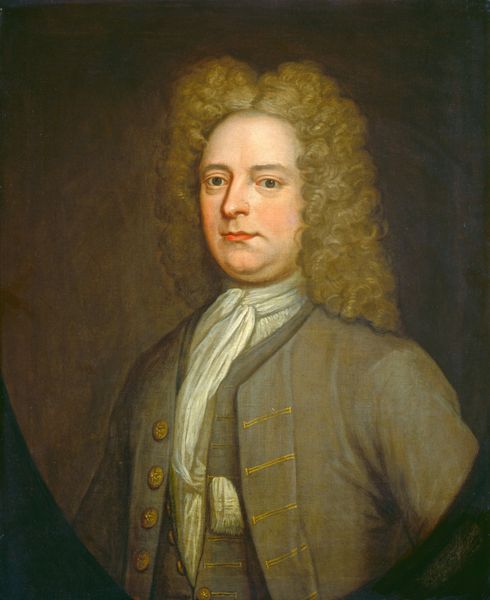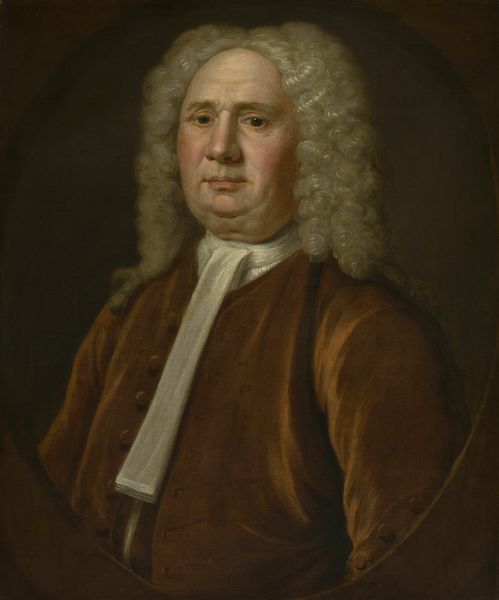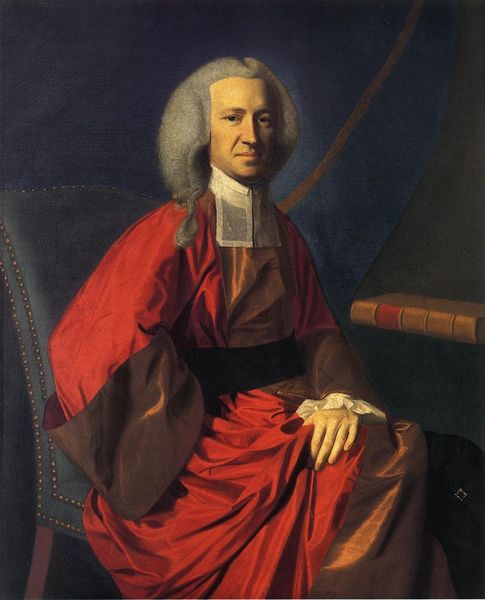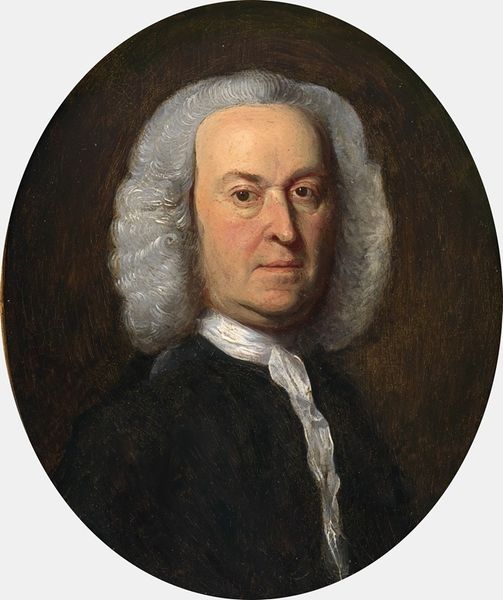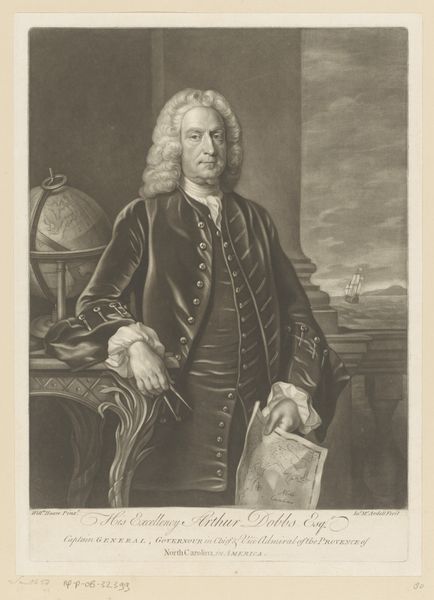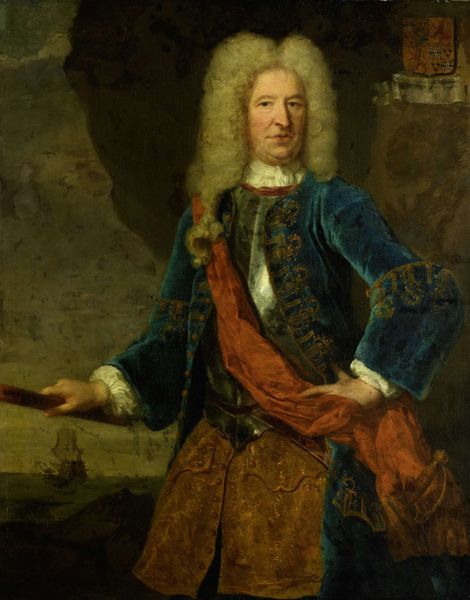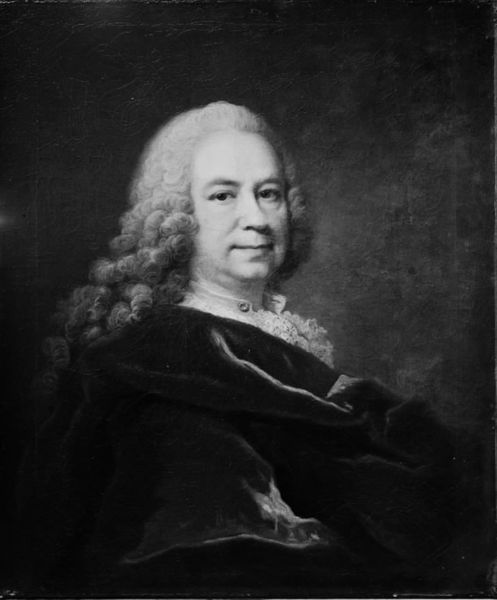
painting, oil-paint
#
portrait
#
baroque
#
painting
#
oil-paint
#
history-painting
Dimensions: overall: 127.2 x 101.6 cm (50 1/16 x 40 in.) framed: 143.5 x 119.4 x 6.4 cm (56 1/2 x 47 x 2 1/2 in.)
Copyright: National Gallery of Art: CC0 1.0
Curator: Let's discuss this oil painting, "Portrait of a Gentleman," believed to be created sometime between 1726 and 1740 by an unknown artist. What’s your first take? Editor: Well, the honeyed tones of his coat against the stark white wig and frilled cuffs immediately draw my eye. There's a strong verticality, isn't there, emphasized by the chair's high back and the classical column in the background. It all feels very deliberate, quite posed. Curator: It's a powerful statement of social standing, certainly. The portrait sits squarely within the conventions of Baroque portraiture; this aesthetic served the elite of the 18th century. Displaying one’s wealth and taste was crucial to confirming a powerful position. Editor: I agree; every element speaks of control and order. His posture, the tight-lipped expression, even the book he holds–it all suggests restraint. Although, perhaps, the color of the garment, that unusual yellow, prevents the painting from becoming utterly severe. Curator: Precisely, and consider the backdrop—not a sprawling landscape or busy interior but a simple classical column, implying his cultivated sensibilities. But who was this man? He’s a gentleman of substance, no doubt, a patron of the arts, perhaps a politician or merchant seeking to cement his place in society. The unknown artist suggests the accessibility of status via painting. Editor: There’s a subtle contrast happening between the man and the background pillar. One is flush and robust, made of living material—the other static. They have vastly different textures. You could almost compare that classical form in the background to a memento mori for this man’s assured sense of self. Curator: Very insightful. What strikes me most is that even without knowing his name or deeds, the painting encapsulates a particular moment in social history when outward appearance and patronage mattered immensely. The painting is both beautiful and telling of the social forces driving art creation at the time. Editor: Indeed. A captivating look into the self-presentation of the past through formal composition, even without knowing exactly whose story is in it.
Comments
No comments
Be the first to comment and join the conversation on the ultimate creative platform.
